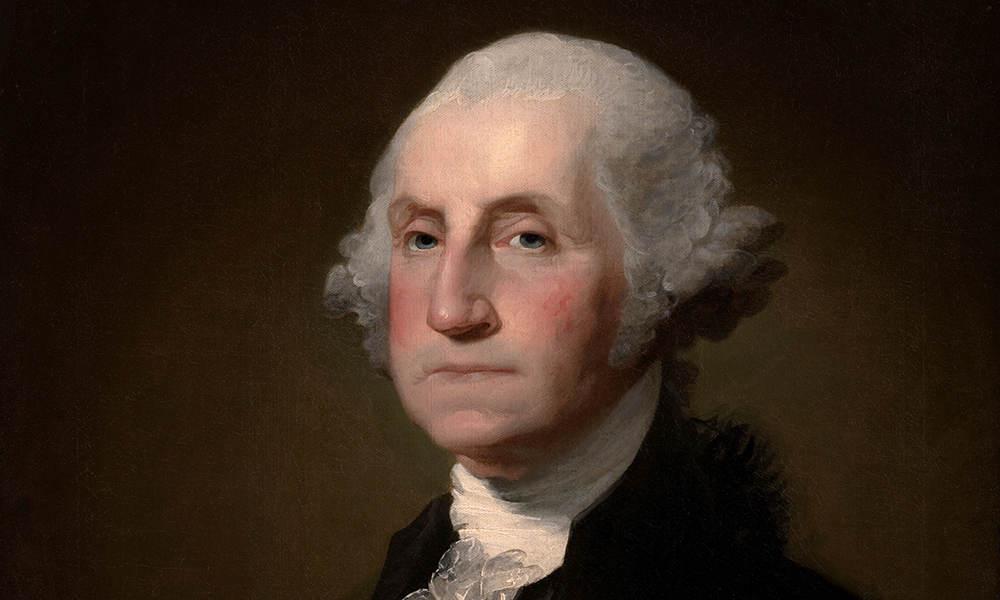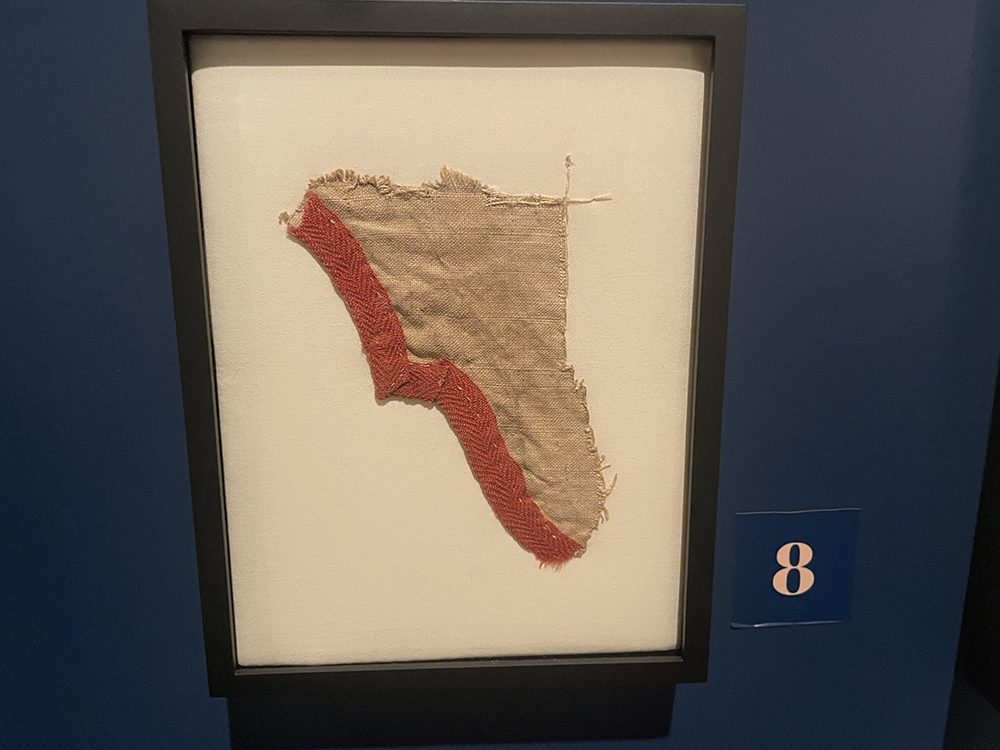
尋寶者經(jīng)常在Goodwill上撿漏,但很少有人像理查德·“德納”·摩爾一樣幸運,。
這位歷史愛好者在該二手商店的在線網(wǎng)站上購買了一塊帳篷碎片,,來自喬治·華盛頓在美國獨立戰(zhàn)爭期間用過的一個帳篷。摩爾為其支付了1,700美元,。它的實際價值可能高達數(shù)萬美元,。
摩爾在2022年最先發(fā)現(xiàn)了這塊帳篷碎片,在拍賣清單中標記這塊碎片屬于華盛頓,。隨附的一份書面說明稱,,這個帳篷曾經(jīng)是弗吉尼亞州詹姆斯敦創(chuàng)建300周年紀念展覽的一部分。摩爾最初表示懷疑,,因為他清楚市場上贗品泛濫,,但在仔細觀察之后,他決定賭一把,。
雖然他非常自信地出價1,700美元,,但他卻沒有信心告訴妻子,因此他把碎片藏在了家里,。后來,,妻子原諒了他。
在拍賣成功后,,摩爾在2月聯(lián)系到費城美國革命博物館(Museum of the American Revolution),,以確定這塊碎片是否是真品。事實證明這確實是真品,。而且它似乎來自華盛頓用餐的一個帳篷,。(這個帳篷的其他部分現(xiàn)藏于史密森尼博物館(Smithsonian),但目前未對外展出,。)

后來摩爾將這塊帳篷碎片租借給美國革命博物館,,后者在今年2月將其對外展出。(該博物館持續(xù)展出華盛頓在戰(zhàn)時用過的帳篷,。)
雖然將一件歷史文物切碎的想法現(xiàn)在讓人覺得不可思議,,例如華盛頓的帳篷,但200年前,,一個名為喬治·華盛頓·帕克·卡斯蒂斯的男子(瑪莎·華盛頓曾孫女的父親),,開始將華盛頓的帳篷剪成碎片,作為紀念品,,也是為了讓人們能夠直接與歷史產(chǎn)生聯(lián)系,。雖然這塊碎片是在后期被從帳篷上剪下來,但博物館的官員認為,剪下它可能也是出于同樣的原因,。
這塊碎片將在費城博物館展覽至2025年1月5日,,屆時它將被歸還給摩爾。摩爾是美國目前已知的唯一一位擁有華盛頓帳篷碎片的私人收藏者,。(財富中文網(wǎng))
譯者:劉進龍
審校,;汪皓
尋寶者經(jīng)常在Goodwill上撿漏,但很少有人像理查德·“德納”·摩爾一樣幸運,。
這位歷史愛好者在該二手商店的在線網(wǎng)站上購買了一塊帳篷碎片,,來自喬治·華盛頓在美國獨立戰(zhàn)爭期間用過的一個帳篷。摩爾為其支付了1,700美元,。它的實際價值可能高達數(shù)萬美元,。
摩爾在2022年最先發(fā)現(xiàn)了這塊帳篷碎片,在拍賣清單中標記這塊碎片屬于華盛頓,。隨附的一份書面說明稱,,這個帳篷曾經(jīng)是弗吉尼亞州詹姆斯敦創(chuàng)建300周年紀念展覽的一部分。摩爾最初表示懷疑,,因為他清楚市場上贗品泛濫,,但在仔細觀察之后,他決定賭一把,。
雖然他非常自信地出價1,700美元,,但他卻沒有信心告訴妻子,因此他把碎片藏在了家里,。后來,,妻子原諒了他。
在拍賣成功后,,摩爾在2月聯(lián)系到費城美國革命博物館(Museum of the American Revolution),,以確定這塊碎片是否是真品。事實證明這確實是真品,。而且它似乎來自華盛頓用餐的一個帳篷,。(這個帳篷的其他部分現(xiàn)藏于史密森尼博物館(Smithsonian),但目前未對外展出,。)
后來摩爾將這塊帳篷碎片租借給美國革命博物館,,后者在今年2月將其對外展出。(該博物館持續(xù)展出華盛頓在戰(zhàn)時用過的帳篷,。)
雖然將一件歷史文物切碎的想法現(xiàn)在讓人覺得不可思議,,例如華盛頓的帳篷,但200年前,,一個名為喬治·華盛頓·帕克·卡斯蒂斯的男子(瑪莎·華盛頓曾孫女的父親),,開始將華盛頓的帳篷剪成碎片,,作為紀念品,也是為了讓人們能夠直接與歷史產(chǎn)生聯(lián)系,。雖然這塊碎片是在后期被從帳篷上剪下來,但博物館的官員認為,,剪下它可能也是出于同樣的原因,。
這塊碎片將在費城博物館展覽至2025年1月5日,屆時它將被歸還給摩爾,。摩爾是美國目前已知的唯一一位擁有華盛頓帳篷碎片的私人收藏者,。(財富中文網(wǎng))
譯者:劉進龍
審校;汪皓
Treasure hunters regularly comb Goodwill, hunting for bargains, but few get as lucky as Richard “Dana” Moore.
The history buff purchased a tent fragment on the thrift store’s online site that was part of one of the tents used by George Washington in the Revolutionary War. Moore paid $1,700 for the scrap. It could be worth tens of thousands of dollars.
The tent fragment was labeled as belonging to Washington in the listing, which Moore first spotted in 2022. A written note accompanying it said the tent had been part of a display that commemorated the 300th anniversary of the founding of Jamestown, Virginia. Moore was skeptical, aware of the high number of fakes on the market, but after a closer look, decided to make the gamble.
He was confident enough to bid $1,700, but says he wasn’t confident enough to tell his wife—and hid the fragment in their home. She has since forgiven him.
After winning the bid, Moore got in touch with Philadelphia’s Museum of the American Revolution the following February to determine if the fragment was authentic. Turns out it was. Specifically, it appeared to be part of the dining tent Washington used. (The rest of the tent is in the Smithsonian collection, but is not on display at present.)
Moore has since loaned the tent clipping to the Museum of the American Revolution, which put it on display in February of this year. (The museum has an ongoing exhibit about Washington’s War Tents.)
While the idea of cutting up a piece of history like Washington’s tent now is unthinkable, 200 years ago a man named George Washington Parke Custis (the father of Martha Washington’s great granddaughter) began cutting away pieces of Washington’s tent as souvenirs and a way to directly connect people with history. This fragment was cut later, but museum officials theorize it could have been for the same reason.
The fragment will remain with the Philadelphia museum until Jan. 5, 2025, when it will be returned to Moore, who is the only known private owner of a piece of one of Washington’s tents in the U.S.






